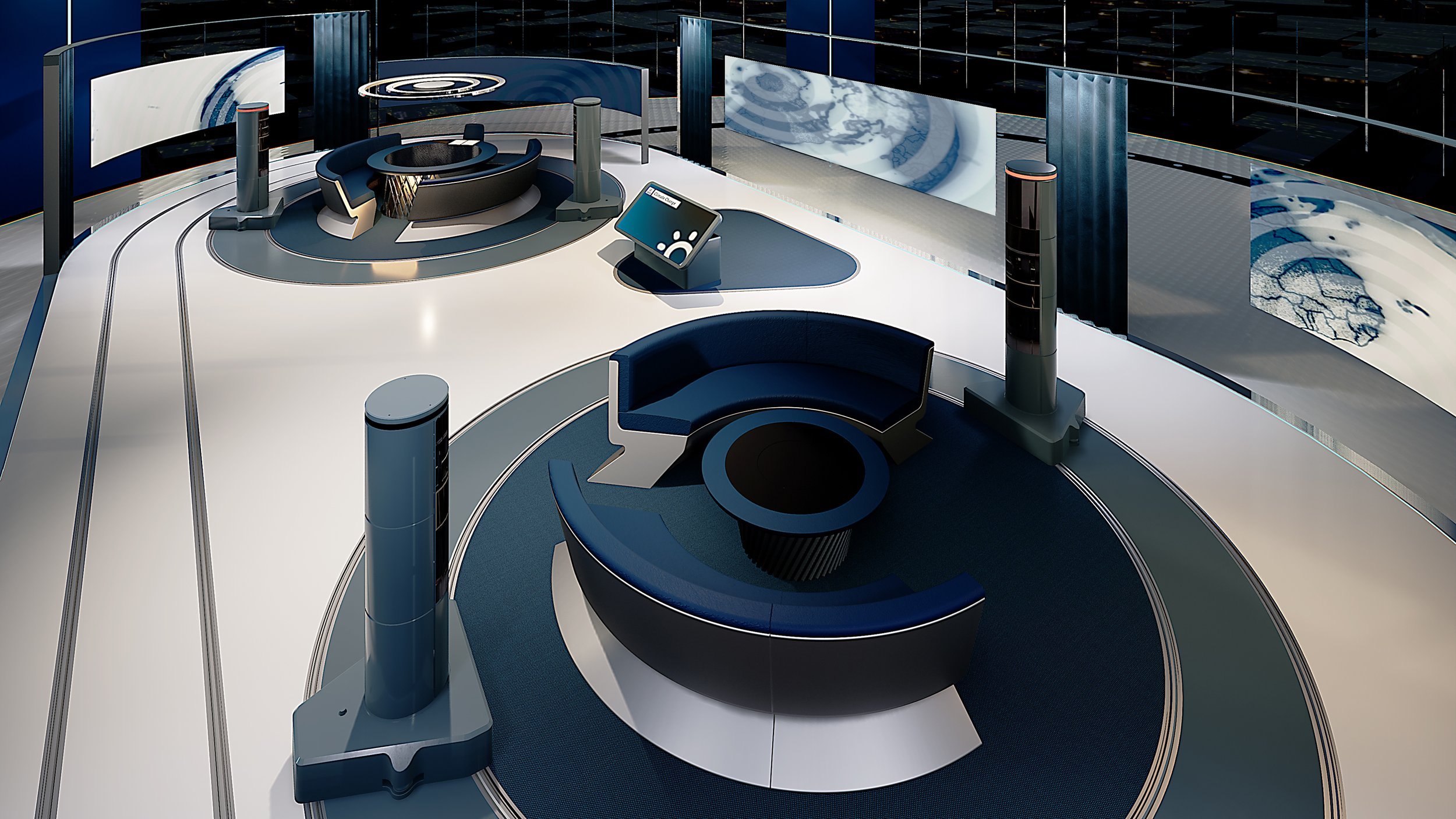A perfect match for excellent studio design
Studio designer Oliver Salway combines the real world with the virtual. Now he has found a new element for the perfect studio design. «What impressed me with Electric Friends was that this was the first time someone seemed to have considered what the camera might look like in the studio», says Oliver Salway.

– All the other systems out there you would typically have behind the scenes. And when you do see them occasionally on screen, it's pretty jarring. They look very mechanical.
- Have you found your perfect match for studio design?
– Yes, I have. What was so attractive with the Electric Friends robotics was the set-up and the smooth curves you would create in the space with these camera towers on the tracks. And to celebrate those as part of the design rather than trying to make them disappear.
01.
About Oliver Salway
Real and virtual design
Salway was one of the founders of the architecture and design house Softroom in London 25 years ago. At one point, The Guardian newspaper wrote about the Softroom founders, «Architectural magicians, capable of designing a delightful surprise at every turn. It would be fascinating to see what they might do on a grand scale. »
– My work with Softroom was always very much about exploring the potential of both physical and real-world spaces and spaces in the virtual realm. It's also about exploring the points where those two intersect, says Salway.
When did you start exploring virtual design in the broadcast industry?
– Back at the end of the 1990s, we produced many virtual projects for Wallpaper Magazine. That led us to a department that existed then at the BBC called Imagineering. The first project they got us to work on was to design a virtual set for what was then the BBC flagship sports program called Grandstand.

The Grandstand job led to a long since extinct web review show for the BBC called Hot Links.
– We created a virtual world with a search engine called Nomy. And what was interesting in the difference between those two sets was that the Grandstand set depicted a realistic-looking space that you might find in perhaps a sports stadium. In contrast, the Hot Link set was about a completely virtual space that wasn't pretending to be a real environment. We saw both ends of the spectrum in virtual studio design.
After the BBC projects, Softroom left the broadcast industry for almost two decades. It wasn't until 2020 that they got back into the world of television and broadcast.
– The technology was very much in its infancy, and the real-time capabilities were inferior 20 years ago, limiting what you could do.
– What had changed since you last worked in the industry?
– A significant change had been this enormous advance in real-time graphics from engines in the gaming industry.
Studio design
During the Covid-lockdown, Salway got invited by a director of the BBC to see if they could find better ways of bringing remote guests into the studio than Zoom. The project with the BBC got interrupted by the announcement of BBC's redesign of their studios.
The BBC were open to considering new technologies, and Oliver decided to participate in the design competition and bid for the project.
– I teamed up with Epic Games, which makes the real-time game engine, Unreal Engine. And they put me in touch with an incredible team of people they knew in the industry. And at the same time, I was researching various things like the latest in camera robotics and found Electric Friends.
Salway proposed to ‘build’ a new virtual studio on top of the BBC Broadcasting House. One of the things the BBC wanted was more depth in the shots.
Control any PTZ camera
– My idea was it would be great if you could see past the presenter to the skyline of London. The camera robots from Electric Friends can provide accurate real-time tracking information without needing an external grid of dots, receivers, or whatever. And so, it makes a perfect companion to a set using virtual production techniques for set extensions.
Want to know more about our work with the BBC? Read about when they unveiled their new Studio B, with new design and automation.
A perfect match
According to Salway, another advantage is the Electric Friends floor tracks.
– They're flush with the floor. Traditional camera tracking needs to be in a trench. The channels create a health and safety hazard and limit the route people can walk around the space. The great thing about these tracks is that you can walk around freely.
Salway designed a set called The News Pavilion for the BBC. Although he didn't win the bid for the news studios, they want to incorporate Electric Friends in the new projects.
– In Japanese ‘Kabuki’ theatre, you're allowed to see that there are puppeteers on stage. They dress in black from head to toe, wearing masks, so you don't see their identity. But you see them and accept them as part of the experience—the same as Electric friends' solution.
– From a designer's point of view, it's almost too good to be true. It's a perfect match for excellent studio design.
Contact us
We are ready to assist you with your set designs and plans for using robotics and automation, with flush floor rails, cable-free sets, AR/VR tracking, and with software-based robotics control systems. Contact us to set up a meeting.
Learn more about the electric.friends all-in-one robotics solution here.
Learn more about the electric.friends robotics controls system, axisctrl.AC2, here.